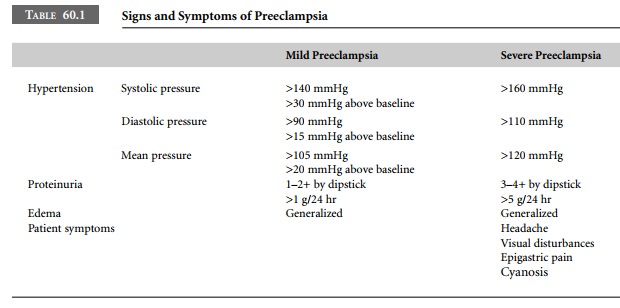Chapter: Clinical Cases in Anesthesia : Preeclampsia
Classify the hypertensive disorders of pregnancy
Classify the hypertensive disorders of pregnancy.
The hypertensive disorders of pregnancy are
classified into four groups by the American College of Obstetricians and
Gynecologists: chronic hypertension, preeclampsia-eclampsia, chronic hypertension
with superimposed preeclampsia, and gestational hypertension.
Hypertension is defined as:
·
Systolic
blood pressure: >140 mmHg or 30 mmHg above baseline
·
Diastolic
blood pressure: >90 mmHg or 15 mmHg above baseline
·
Mean
arterial blood pressure: >105 mmHg or 20 mmHg above baseline
Blood pressures should be measured at rest with
left uterine displacement and should be reproducible at least 6 hours later.
Chronic hypertension is diagnosed when the
blood pres-sure is elevated prior to the 20th week of pregnancy. Chronic
hypertension is a disease state that predates pregnancy. Since blood pressure
normally decreases during pregnancy, any parturient with a diastolic blood
pressure greater than 80 mmHg is suspected of having chronic hypertension.
Preeclampsia-eclampsia is a hypertensive
disorder unique to pregnancy. The triad of hypertension, proteinuria, and edema
characterizes preeclampsia. Except in associa-tion with hydatidiform mole,
preeclamptic hypertension does not manifest prior to the 20th week of gestation.
Proteinuria is defined as the excretion of greater than 0.3 grams of protein in
a 24-hour urine collection or 1+ on dipstick analysis. Edema must be
generalized and not confined to dependent areas of the body. Preeclampsia is
classified as either mild or severe depending on the degree of hypertension,
extent of proteinuria, or patient complaints. Preeclampsia degenerates into
eclampsia when generalized seizures occur (Table 60.1).

Gestational hypertension is defined as hypertension
occurring after the 20th week of pregnancy in the absence of other signs of
preeclampsia. Gestational hypertension is frequently essential hypertension
that is unmasked by pregnancy.
Related Topics